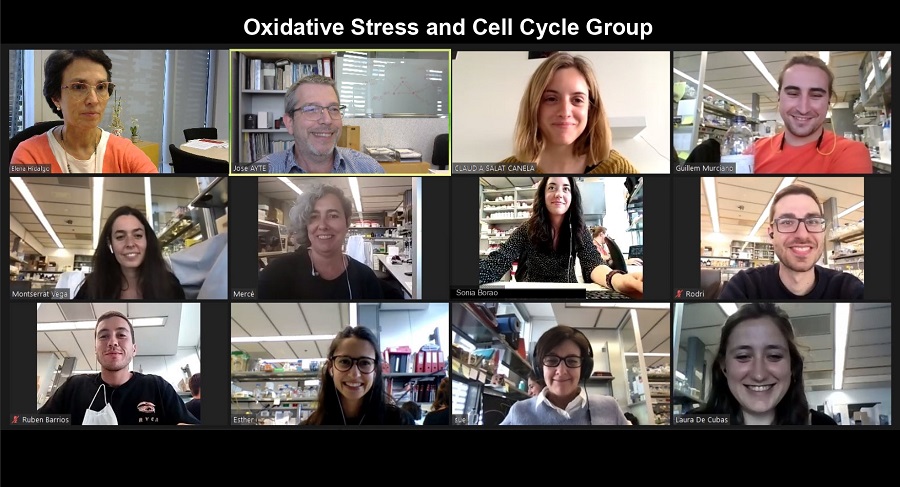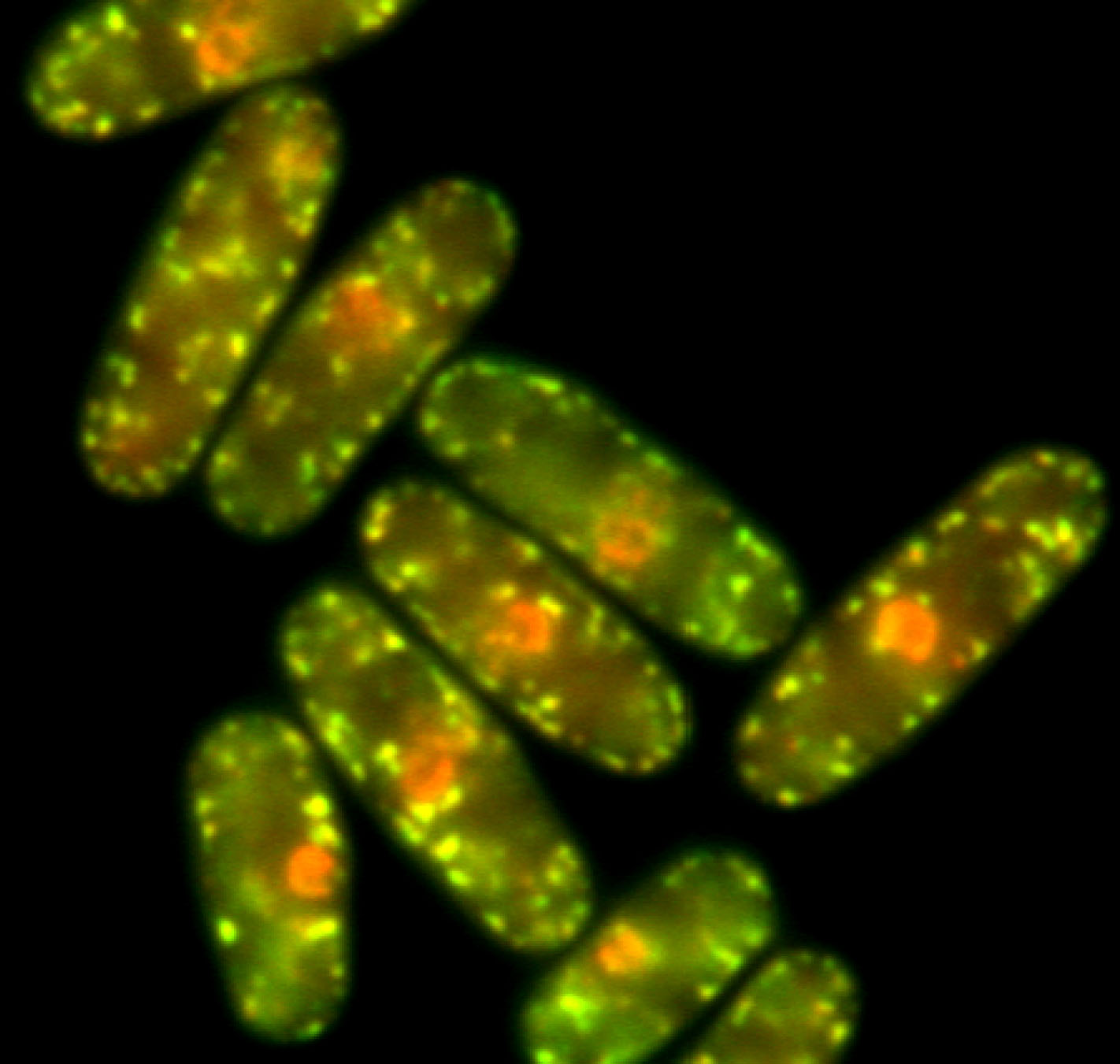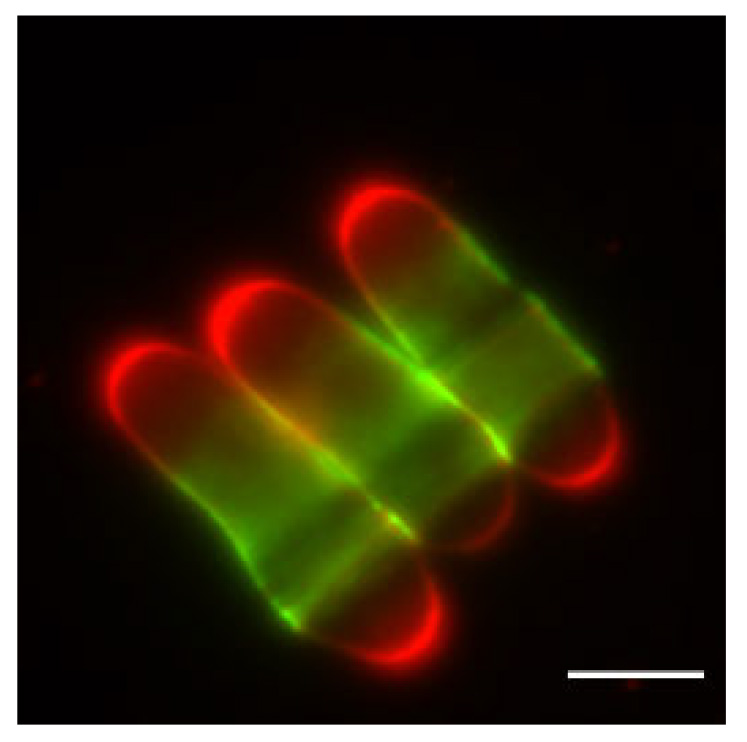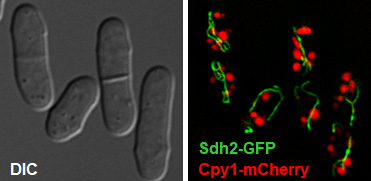Oxidative Stress and Cell Cycle
Elena Hidalgo and Jose Ayté

Group website
Research Outline
Using fission yeast as a model system, our group is interested in studying the components and molecular mechanisms that regulate the responses to oxidative stress and the mitotic and meiotic cell cycle. In general terms, we study basic cellular processes with the aim of understanding physio-pathological situations such as aging, neurodegenerative diseases, and cancer. Specifically, we are interested in:
-
Reactive oxygen species exert toxic, but they also have signaling roles: controlled endogenous increases of these species may improve the fitness of the cell and extend the life span.
-
In healthy cells, the cell cycle is controlled by overlapping signaling pathways controlling cell growth and cell division. This tight control is missing in a cancer cell.
Research Lines
-
H2O2 levels linked to cell fitness, signaling and toxicity: we have developed genetically encoded reporters to monitor cytosolic H2O2 fluctuations arising from exogenous sources or from mitochondrial activity.
-
Protein quality control during physiology, after stress and in aging: We are currently studying regulators of protein carbonylation and of protein aggregation, taking as a model the human glutamine-rich protein huntingtin, causing Huntington disease. Our goal is to understand the fate of oxidized proteins.
-
Regulation of the G1-to-S transition: We are characterizing the regulation of the yeast MBF complex (functional homolog of mammalian pRB/E2F). Like its metazoan counterpart, the regulated activity of this complex is essential for the G1-to-S transition.
-
Splicing regulation during meiosis: Fission yeast cells have a meiotic-specific splicing program that depends on two proteins of the Forkhead family. We have now set up a system that allows the chemical induction of synchronous meiosis which can be combined with any temperature-sensitive alleles, allowing the individual determination of the role of each factor.
Team during 2019-20
- PhD students: Alberto González-Medina, Luis Marte, Clàudia Salat-Canela, Esther Pazo, Rodrigo Fraile, Sonia Borao, Laura de Cubas, Guillem Murciano, Rubén Barrios
- Postdocs: Cristina Corral, Laura Sánchez, Montse Vega
- Lab manager: Mercè Carmona
- Teaching Assistant: Susanna Boronat
- Ramón y Cajal researcher: Marga Cabrera
Selected publications
-
Carmona, M., de Cubas, L., Bautista, E., Moral-Blanch, M., Medrano-Fernández, I., Sitia, R., Boronat, S., Ayté, J. and Hidalgo, E. (2019) Monitoring cytosolic H2O2 fluctuations arising from altered plasma membrane gradients or from mitochondrial activity. Nat. Commun. 10:4526.
doi: 10.1038/s41467-019-12475-0. PMID: 31586057
-
González-Medina, A., Hidalgo, E. and Ayté, J. (2019) Gcn5-mediated acetylation at MBF-regulated promoters induces the G1/S transcriptional wave. Nucleic Acids Res. 47:8439-8451.
doi: 10.1093/nar/gkz561. PMID: 31260531
-
Cabrera, M., Boronat, S., Marte, L., Vega, M., Pérez, P., Ayté, J. and Hidalgo, E. (2020) Chaperone-facilitated aggregation of thermo-sensitive proteins shields them from degradation during heat stress. Cell Rep. 30:2430-2443.
doi: 10.1016/j.celrep.2020.01.077. PMID: 32075773
-
Boronat, S., Marte, L., Vega, M., García-Santamarina, S., Cabrera, M., Ayté, J. and Hidalgo, E. (2020) The Hsp40 Mas5 connects protein quality control and the general stress response through the thermo-sensitive Pyp1. iScience 23: 101725.
doi: 10.1016/j.isci.2020.101725. PMID: 33225241
-
Sánchez-Mir, L., Fraile, R., Ayté, J. and Hidalgo, E. (2020) Phosphorylation of the transcription factor Atf1 at multiple sites by the MAP kinase Sty1 controls homologous recombination and transcription. J. Mol. Biol. 432:5430-5446.
doi: 10.1016/j.jmb.2020.08.004. PMID: 32795531
Other relevant information
The PIs of the group have been the organizers of the EMBO Workshop on Fission Yeast (10th International Fission Yeast Meeting), held in Barcelona (July 2019).

Fission yeast cells build protein aggregate centers (PACs) in response to heat stress, protecting thermo-sensitive proteins from degradation. Image shows the co-localization of PACs (in red) and a marker of stress granules, eIF4E (in green).


